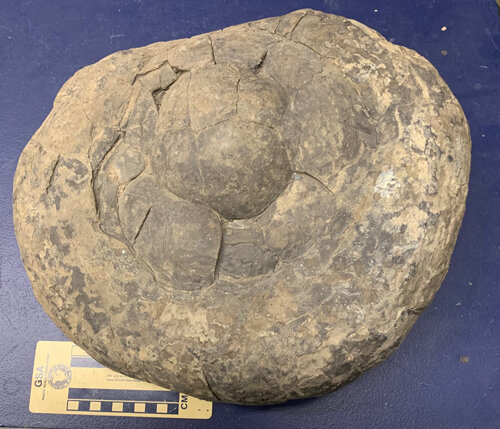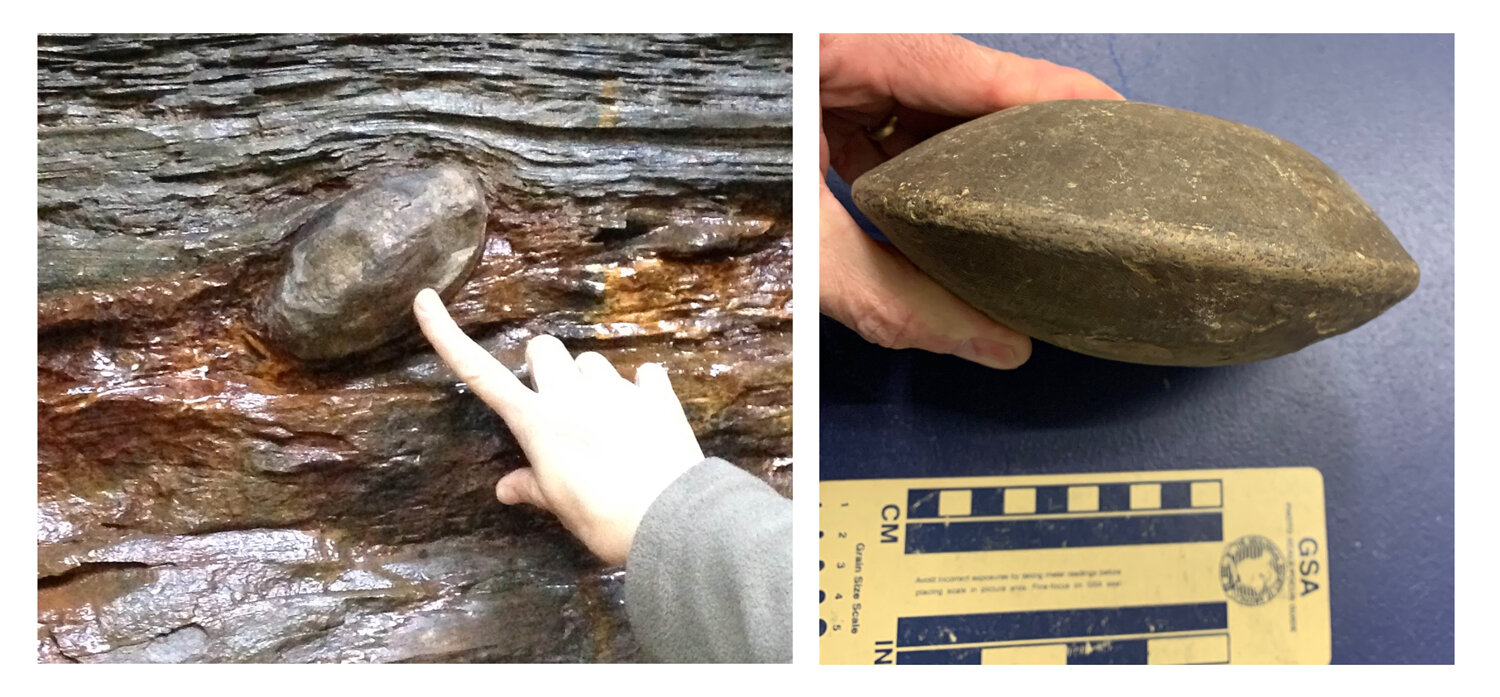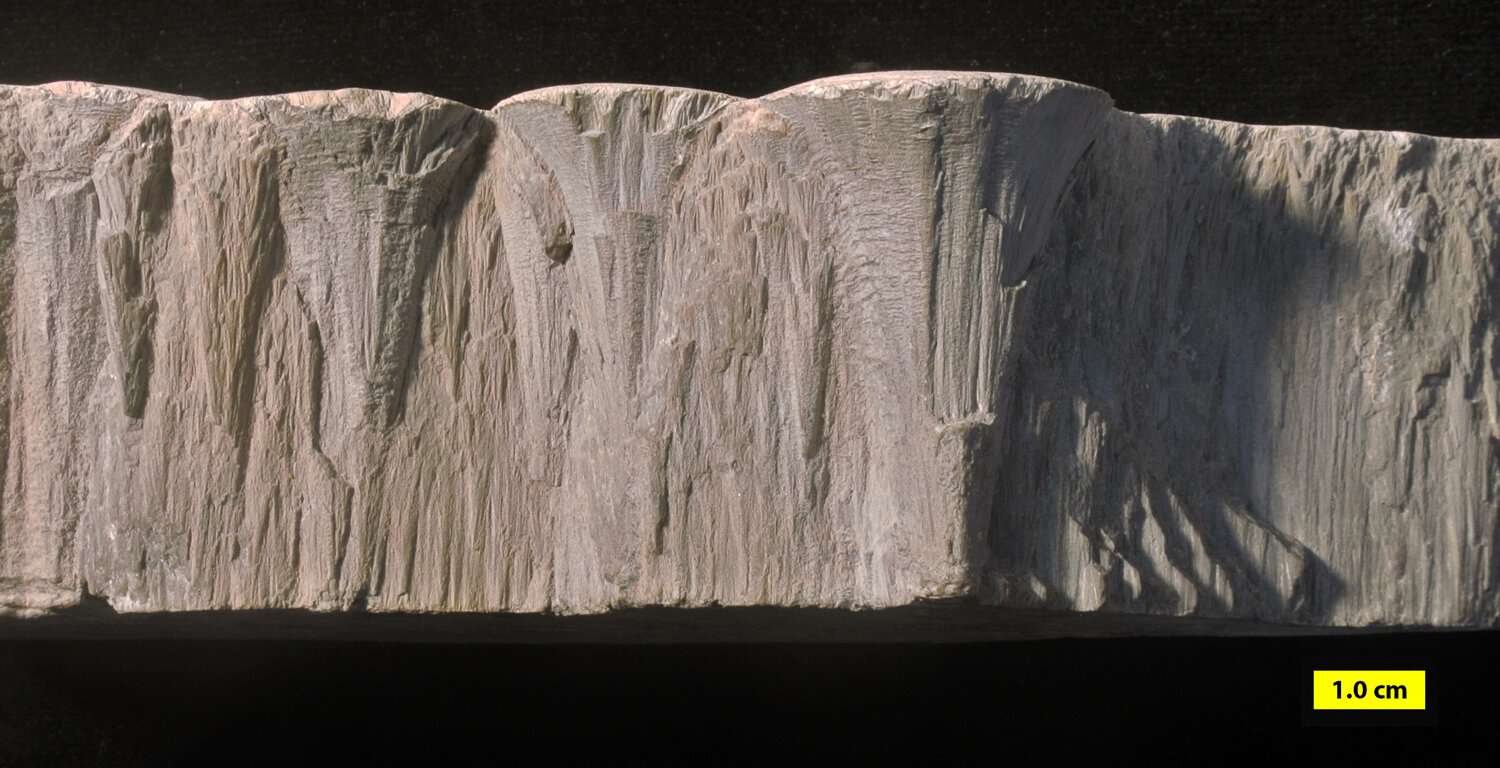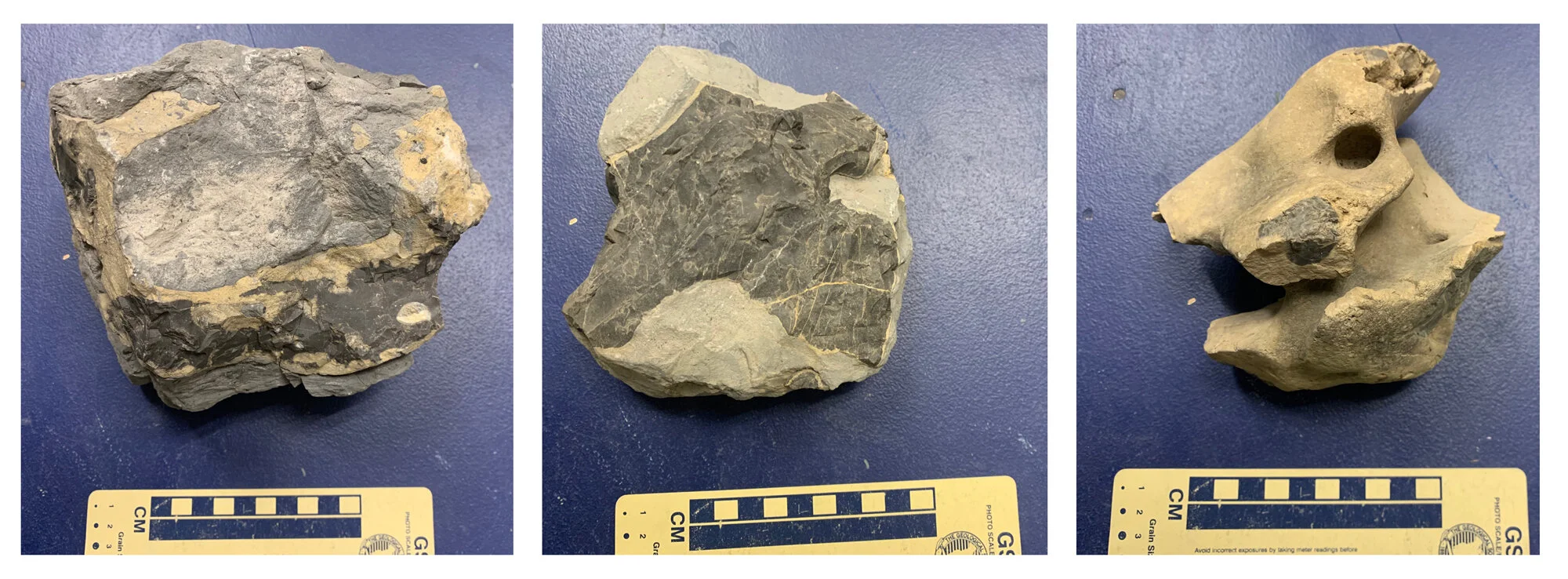Concretions
Introduction
This large calcareous concretion from central New York looks very much like a turtle shell. The cracks in this concretion occurred as a result of the collapsing of the dome which often occurs in the larger concretions.
Concretions are commonly misunderstood geologic structures. Often mistaken for fossil eggs, turtle shells, or bones, they are actually not fossils at all but a common geologic phenomenon in almost all types of sedimentary rock, including sandstones, shales, siltstones, and limestones.
Concretions form inside sediments before they harden into rocks, when they are still soft, as minerals within a sediment precipitate, sometimes in successive layers around a nucleus such as a shell or pebble. Rates of this formation vary, but can sometimes apparently be relatively rapid, over as short a period as months to years.
In some cases, the bedding planes—the compacted layers of sediment from the time of deposition—are preserved within the concretion itself. If the planes pass continuously through the concretion, then it probably formed after the sediment was compacted. If the planes curve around the concretion, it probably formed early after the deposition of the sediment. The size of the concretion may be related to the permeability of the rock in which it occurs: the more permeable the surrounding rock, the larger the concretion.
Below we introduce the major types of concretions and similar rocks, as well as share images of concretions that were sent to us by the public and often initially mistaken for various types of fossils.
Some major types of concretions
Calcareous Concretions
Calcareous concretions are spherical to oval-shaped calcium carbonate concretions that are flattened parallel to the bedding planes. They can range in size from 3 cm to 8 m in diameter. They most often precipitate around a nucleus of fossilized material including plant matter, shells, or even remains of fish. Often when the concretions erode, they can form odd shapes, sometimes resembling fossils. These are very common in the Devonian rocks found in central New York.
Left: A calcareous concretion exposed in Devonian-aged sedimentary rock at Watkins Glen State Park, New York. Left: A calcareous concretion in the PRI collections.
Septarian Nodules
Septarian nodules are distinctly sphere-like concretions that are characterized by a series of cracks that widen towards the center and die out towards the sides of the concretion. These radiating cracks are often crossed by a series of concentric cracks giving them a "turtle-back" appearance. Dehydration of the concretion creates the cracks which then are filled with another crystalline cement, such as calcite or silica. They can range in size from 10 to 100 cm in diameter and usually are made up of a large component of iron.
Examples of concretions in the PRI collections. The specimen on the left is from Crowbar Point near Cayuga Lake in New York. The specimen on the right shows interior features.
Cone-in-Cone Concretions
Cone-in-cone concretions occur along the bedding plane as a 2 to 15 cm thick layer. They are composed of an aggregate of upright cones with ribbed or grooved sides, usually made up of minerals including calcite or gypsum.
Cone-in-cone concretions; Photograph taken by Mark A. Wilson (Department of Geology, The College of Wooster) (Wikimedia Commons; Public Domain).
A geode. Image by “Kora27” (Wikimedia Commons; Creative Commons Attribution-Share Alike 4.0 International license).
Geodes
Geodes are spherical concretions with a hollow interior, ranging from 2 cm to 1 m in diameter. The outermost layer is generally composed of chalcedony, a brown microcrystalline variety of quartz. The interior contains a lining of inwardly projecting crystals, usually quartz of many varieties. Geodes that are completely filled with crystals are sometimes known by rock and mineral collectors as “thunder eggs”.
Chert Nodules
Chert nodules are not concretions, but in Devonian rocks of central New York they can frequently have bizarre shapes that are similar to those of concretions. Chert is micro- or cryptocrystalline silica (SiO₂; also known as chalcedony or flint) which forms under particular chemical conditions inside soft sediments. Like concretions, they form inside soft sediments, and when they weather out, their shapes can frequently look like fossils. (Chert itself can sometimes contain well-preserved microfossils.)
Examples of chert nodules from PRI’s collection. The specimen on the right is from the Lower Devonian Onondaga Limestone of Dryden, New York; it is easy to understand how it might be mistaken for a skull.
Examples of Concretions Discovered by the Public
These images of concretions were all sent to us by members of the public; in many cases, the concretions were initially mistaken for various types of fossils. All images are shared with the permission of the photographers.
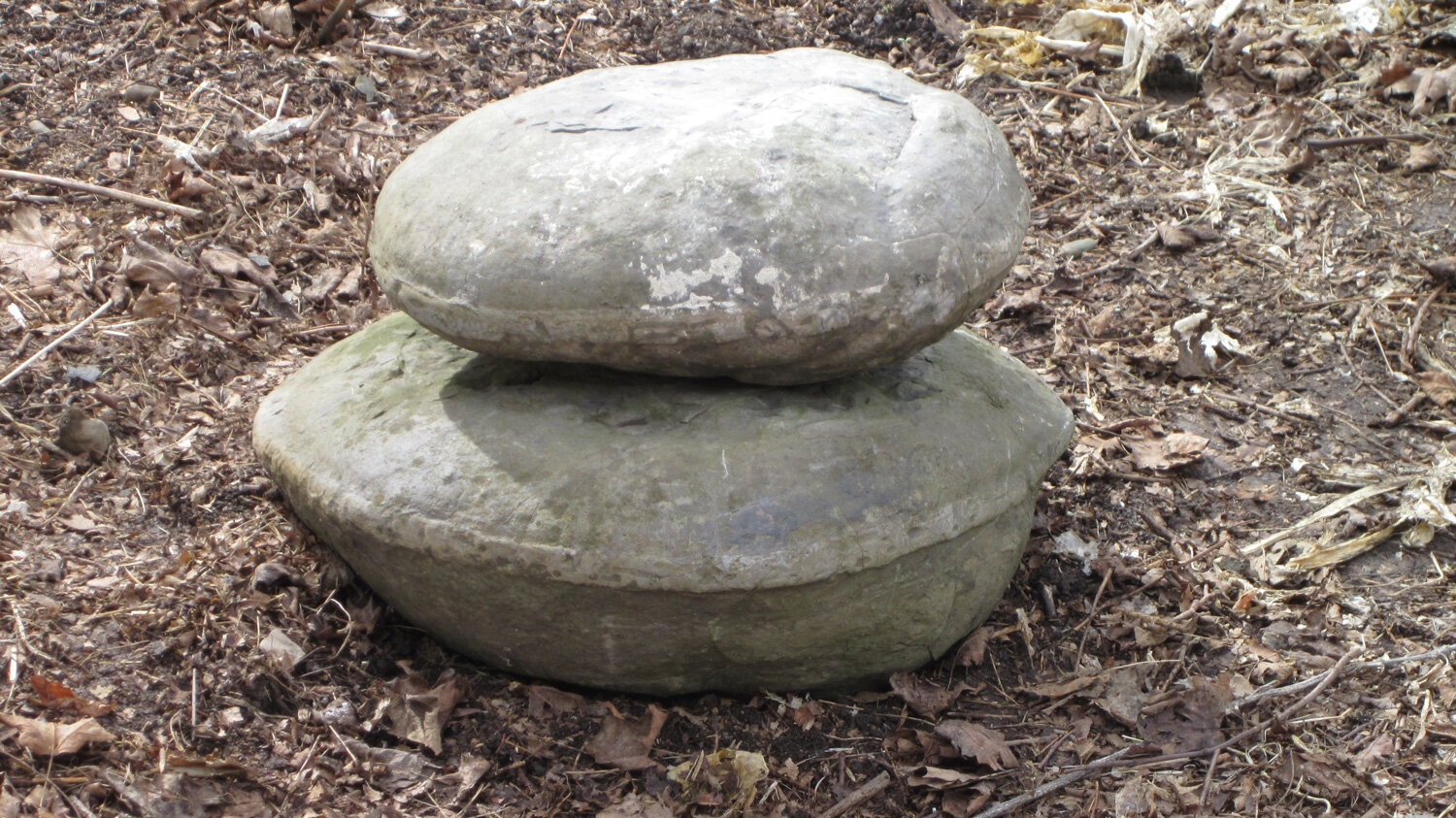


Sources for More Information
Technical Literature
Marshall, J.D., and D. Pirrie. 2013. Carbonate concretions—explained. Geology Today, 29(2): 53-62.
McCoy, V.E., R.T. Young, and D.E.G. Briggs. 2015. Factors controlling exceptional preservation in concretions. Palaios, 30(4): 272–280.
Seilacher, A. 2001. Concretion morphologies reflecting diagenetic and epigenetic pathways. Sedimentary Geology, 143(1-2): 41-57.
Sellés-Martínez, J. 1996. Concretion morphology, classification and genesis. Earth-Science Reviews, 41(3-4): 177-210.
Wilson, D.D., and C.E. Brett. 2013. Concretions as sources of exceptional preservation, and decay as a source of concretions: examples from the middle Devonian of New York. Palaios, 28(5): 305-316.
Yoshida, H., K. Yamamoto, M. Minami, N. Katsuta, S. Sin-ichi, and R. Metcalfe. 2018. Generalized conditions of spherical carbonate concretion formation around decaying organic matter in early diagenesis. Scientific Reports, 8(6308): 1-10.
Websites
ThoughtCo: A Gallery of Concretions, by Andrew Alden.
Concretions in the Millboro Formation, Fort Valley, by Callan Bentley.
Geocaching: Concretion Collection, Meridan, MS, by Team Neos, Sir Zargon, and White Cap.
Concretions and Nodules in North Dakota, by Bob Biek.
Concretions in the Mississippian Fort Payne Formation of Kentucky (Flickr), by James St. John.


